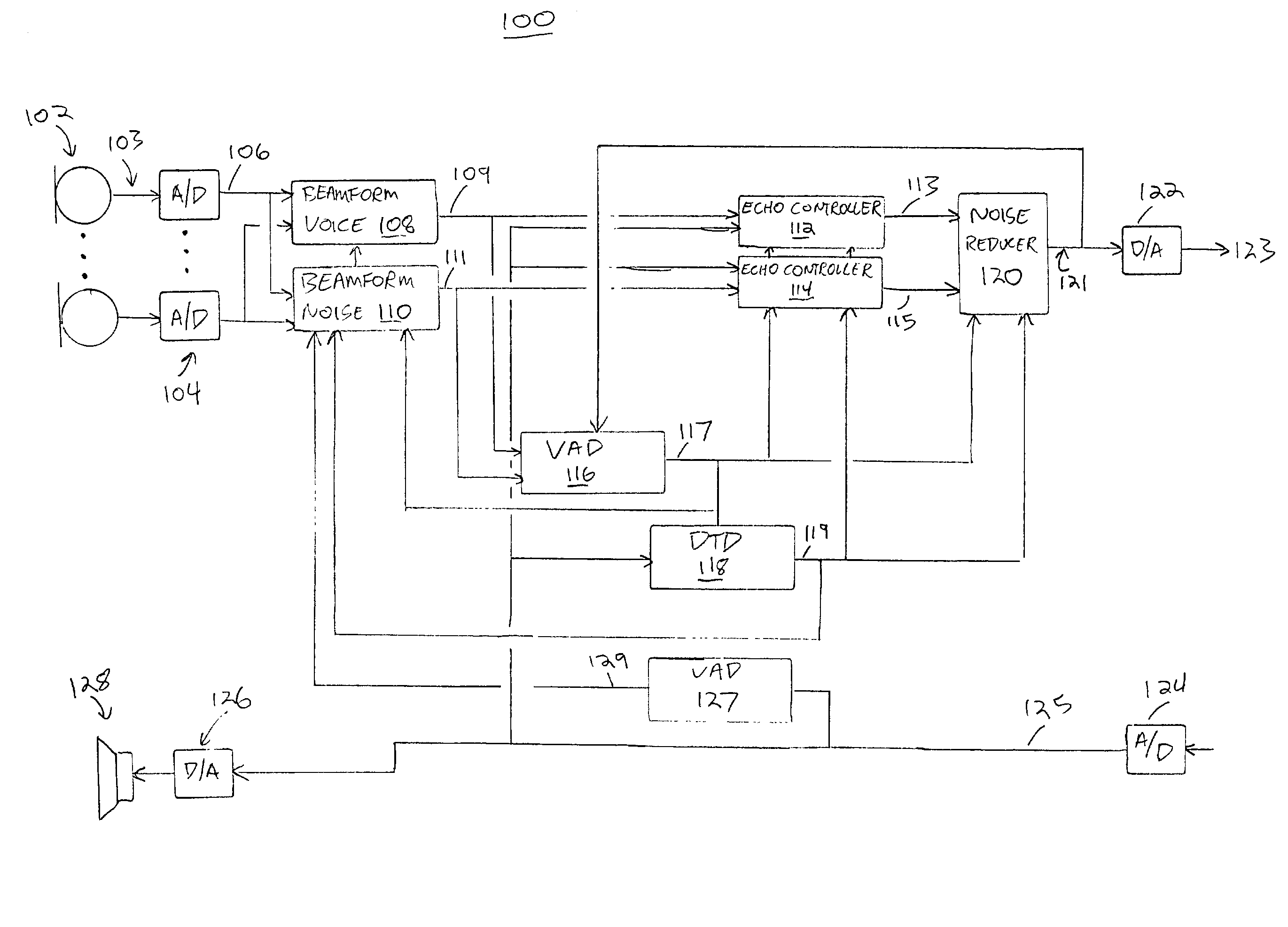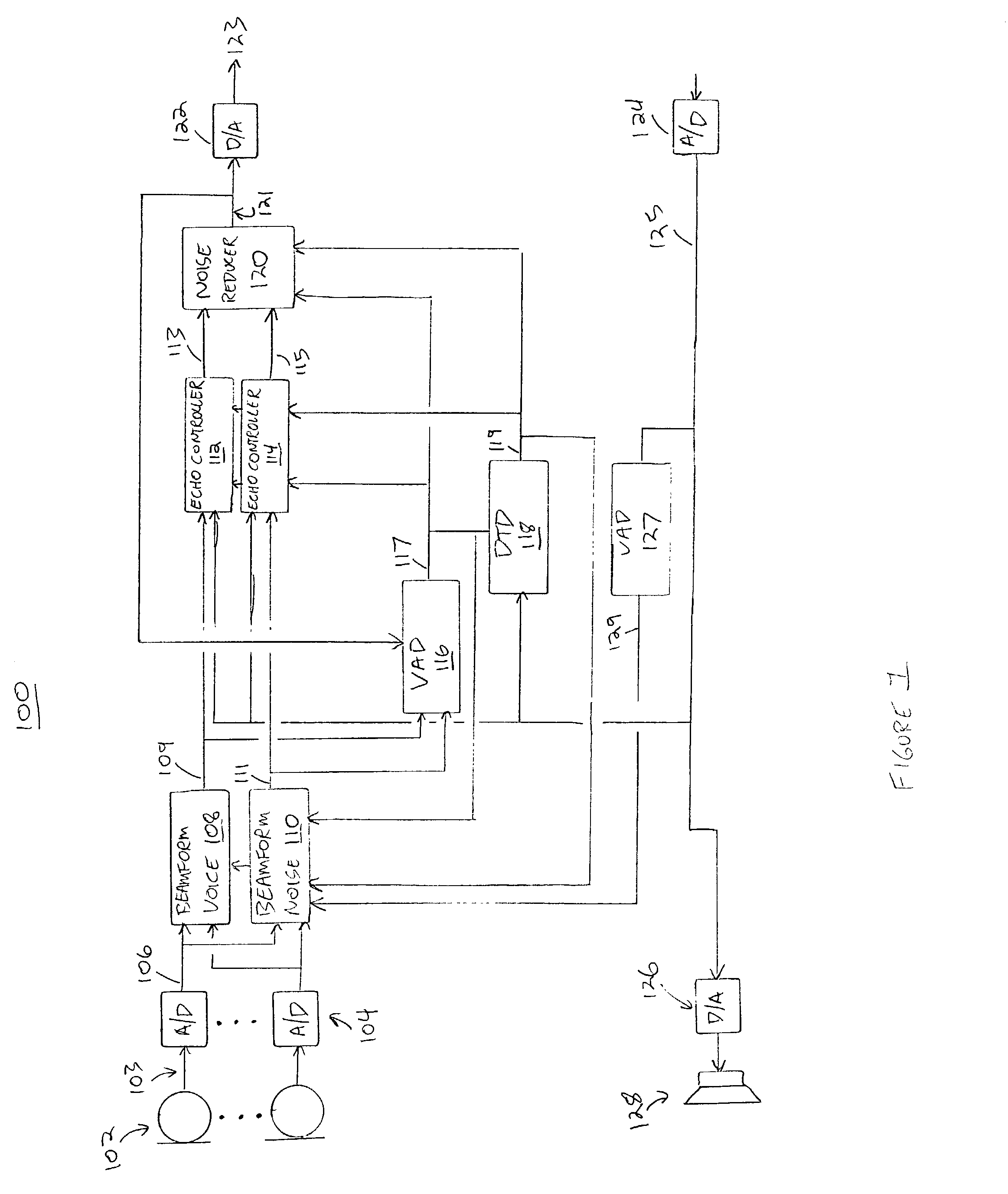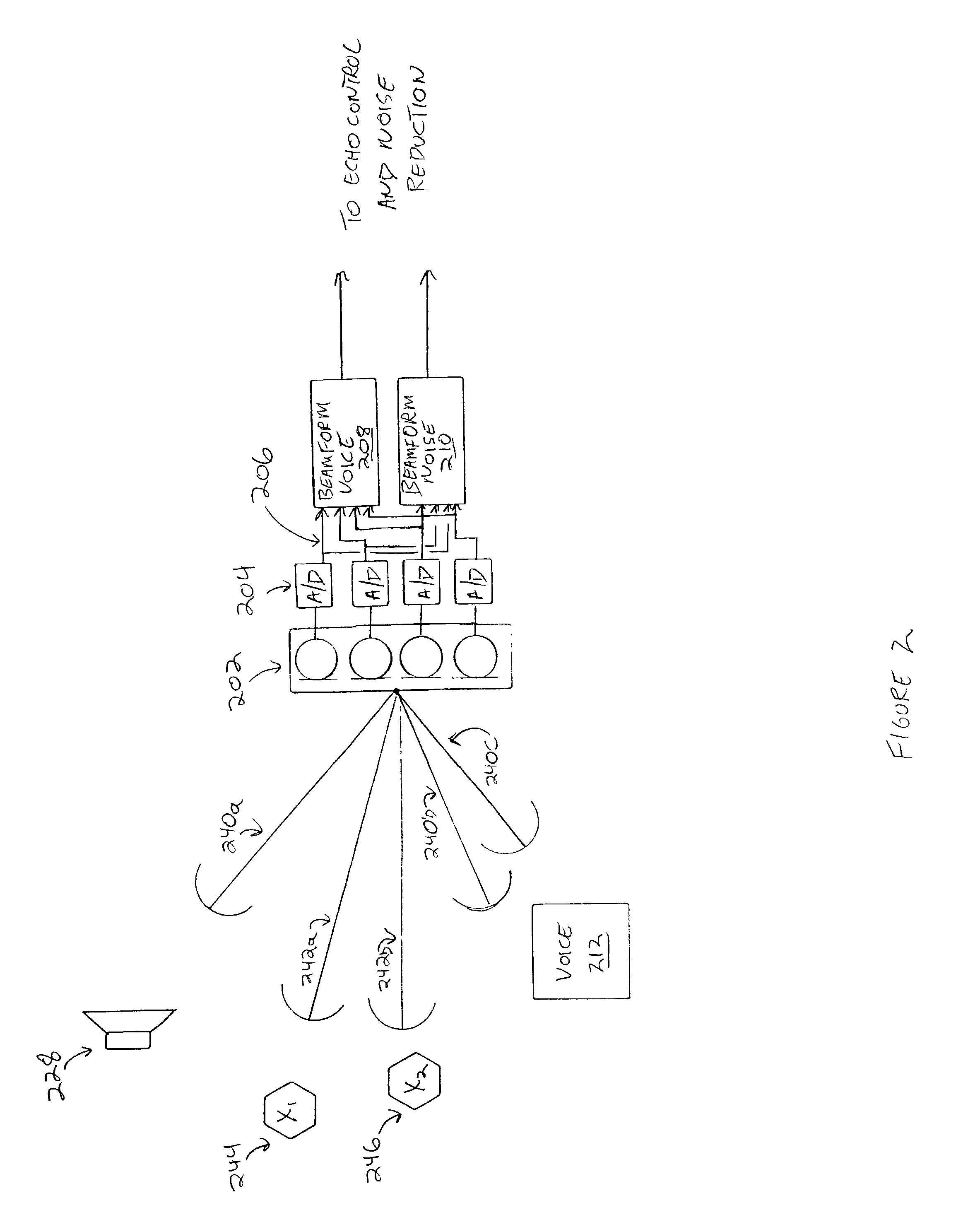Method and apparatus for reducing echo and noise
a technology of echo and background noise, applied in the field of signal processing, can solve the problems of reducing the acoustic isolation required of headset design, affecting the sound quality of the signal, and being uncomfortable to wear, and achieve the effect of reducing acoustic echo and background nois
- Summary
- Abstract
- Description
- Claims
- Application Information
AI Technical Summary
Benefits of technology
Problems solved by technology
Method used
Image
Examples
Embodiment Construction
[0015]The present invention provides a solution to the needs described above through an apparatus and method for reducing acoustic echo and background noise. The invention utilizes beamforming techniques on a voice and noise signal together with echo cancellation techniques on a voice and noise signal with noise reduction algorithms.
[0016]Still other embodiments of the present invention will become apparent to those skilled in the art from the following detailed description, wherein is shown and described only the embodiments of the invention by way of illustration of the best modes contemplated for carrying out the invention. As will be realized, the invention is capable of modification in various obvious aspects, all without departing from the spirit and scope of the present invention. Accordingly, the drawings and detailed description are to be regarded as illustrative in nature and not restrictive.
[0017]Referring to FIG. 1, diagram of a basic configuration utilizing an embodimen...
PUM
 Login to View More
Login to View More Abstract
Description
Claims
Application Information
 Login to View More
Login to View More - R&D
- Intellectual Property
- Life Sciences
- Materials
- Tech Scout
- Unparalleled Data Quality
- Higher Quality Content
- 60% Fewer Hallucinations
Browse by: Latest US Patents, China's latest patents, Technical Efficacy Thesaurus, Application Domain, Technology Topic, Popular Technical Reports.
© 2025 PatSnap. All rights reserved.Legal|Privacy policy|Modern Slavery Act Transparency Statement|Sitemap|About US| Contact US: help@patsnap.com



